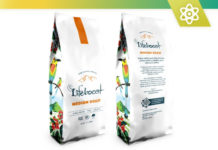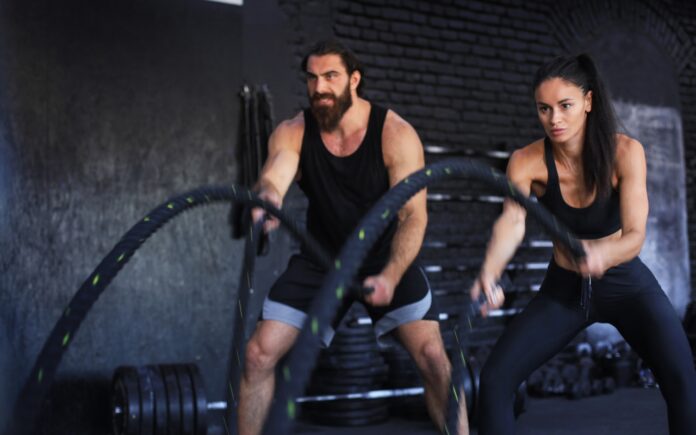Functional fitness training has rapidly become popular in the fitness world for its ability to train the body for real-life activities. Unlike traditional workouts that isolate muscle groups, functional fitness emphasizes full-body movements that mimic daily tasks. This method boosts strength and endurance and enhances balance, coordination, and flexibility. Let's dive into the numerous benefits and core principles of functional fitness training, along with tips and tricks to help you start your functional fitness journey.
Functional fitness is a classification of exercise that involves training the body for the activities performed in daily life. The underlying principle is to prepare the muscles to work together and simulate common movements you might do at home, at work, or in sports. Functional fitness often includes compound movements like squatting, reaching, pulling, and lifting. These exercises make carrying groceries, climbing stairs, or playing with your kids more accessible and safer.
One of the critical benefits of functional fitness is its focus on improving overall muscle coordination and balance. You can enhance your body's ability to work as a cohesive unit by performing exercises that target multiple muscle groups simultaneously. This holistic approach helps to improve posture, reduce the risk of injury, and increase flexibility. For example, functional exercises often require you to start and finish in positions where your muscles work within their natural range of motion. This can help to boost your body's functional strength and overall flexibility.
Moreover, functional fitness can significantly aid in managing chronic joint pain and enhancing joint health. Regular functional training strengthens the muscles and the soft tissues surrounding the joints, reducing the likelihood of injuries and making daily tasks less painful. Strengthening connective tissues such as ligaments and tendons is crucial because these areas are prone to injury. By reinforcing these tissues, functional fitness helps mitigate back, knee, neck, and joint pain.
An essential aspect of functional training is its role in building functional muscle rather than simply emphasizing aesthetics or bulk. This type of training doesn't focus on isolating one muscle group at a time. Instead, it involves compound movements that engage several muscle groups simultaneously. This helps build strength and teaches your body to function as a single unit, making you more adept at handling real-life physical activities.
Functional fitness also offers the advantage of reducing the risk of injury. Exercises that mimic common movement patterns better equip your body to handle physical stress, whether during workouts or daily activities. Functional training ensures that your muscles, along with the soft tissues around them, become stronger and more resilient. This comprehensive approach to strength training helps create a balanced physique less prone to injuries.
Another significant benefit of functional fitness is its ability to provide sport-specific carryover. Functional training can enhance performance for individuals involved in sports by focusing on the primary movement patterns used in their sport. For instance, deadlifts can improve your ability to lift and pull heavy objects, which is beneficial for sports involving similar motions. Functional fitness routines often include high-intensity functional training (HIFT) components, such as CrossFit, which combine strength and cardiovascular endurance training.
Functional fitness training is also highly adaptable and can be modified to meet individual fitness levels and goals. Whether you are a beginner or an advanced athlete, functional exercises can be scaled up or down in intensity. Starting with bodyweight-only exercises is a good way to learn proper movement patterns before adding weights. Once you have mastered these basics, you can progress to more challenging moves, incorporating resistance bands, kettlebells, and dumbbells.
Getting started with functional fitness doesn't require much equipment. Essential items include resistance bands, kettlebells, and an exercise mat. Resistance bands, in particular, are versatile and can add weight to various exercises without the bulkiness of dumbbells or kettlebells. When purchasing equipment, focus on functionality over appearance. Plain cast iron kettlebells may not look exciting, but they are more reliable and comfortable to grip.
One effective way to ensure you do functional exercises correctly is to hire a personal trainer or strength coach. A qualified professional can teach you the basic movements, correct your technique, and create a customized functional strength-training program tailored to your needs. This personalized approach can help you avoid injuries and make your workouts more efficient.
Taking a functional strength-training class can be a motivating and educational experience for those who prefer group settings. Many gyms and fitness centers offer such classes, which can introduce you to different fitness styles and help you find the one that works best for you. Additionally, attending classes can provide a sense of community and accountability, making sticking with your fitness routine easier.
The benefits of functional fitness extend beyond physical health. Regular functional training can improve mental well-being by reducing stress, boosting mood, and enhancing cognitive function. The focus on purposeful movement and the mind-body connection during functional exercises can also lead to a greater awareness of one's body's capabilities and limitations.
Functional fitness is not just for athletes or fitness enthusiasts; it benefits people of all ages and fitness levels. Older adults, in particular, can greatly benefit from functional training, as it helps to maintain independence and improve the ability to perform activities of daily living. By enhancing strength, balance, and coordination, functional fitness can reduce the risk of falls and improve overall quality of life.
In conclusion, functional fitness training offers a comprehensive approach to improving physical and mental health. By focusing on real-life movements and compound exercises, functional fitness helps to build strength, flexibility, and coordination, making daily tasks easier and reducing the risk of injury. Whether you are looking to enhance your athletic performance, manage chronic pain, or improve your overall fitness, functional training can provide significant benefits. With minimal equipment and the option to start with bodyweight exercises, functional fitness is accessible and adaptable to everyone. To learn more about functional fitness and how to incorporate it into your routine, consider visiting resources like Primal Play, Everyday Health, and OPEX Fitness. Embrace the journey towards a healthier, more functional you, and discover the transformative power of functional fitness training.













![Bowflex Max Total: 2024 Fitness Workout Exercise Machine [Review] Bowflex Max Total: 2020 Equipment Review For Complete Upper and Lower Body Workout](https://www.advancedliving.com/wp-content/uploads/2019/12/Bowflex-Max-Total-218x150.jpg)


